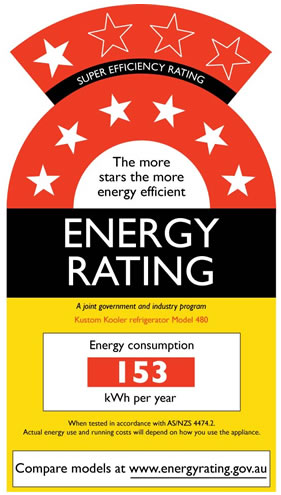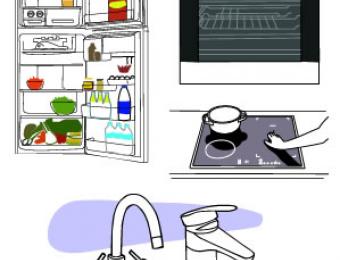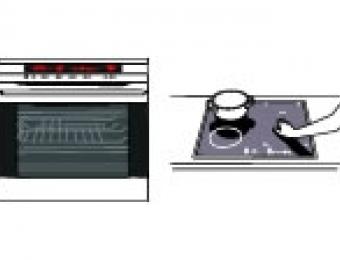
These days, most major electrical appliances for the kitchen are sold with energy efficiency labels (also called MEPS labels, short for Minimum Energy Performance Standards). Refrigerators, ovens, microwaves and dishwashers are all required to carry a label that shows a star rating, indicating an appliance's overall efficiency.
The idea behind these ratings is to make it as easy as possible for people to be able to compare the real-world performance and efficiency of the products they're buying without having to rely on manufacturers' claims or their own subjective calculations.
How do energy star ratings work?
The star system and labelling scheme is an easy way to figure out how energy efficient different appliances will be when compared to other appliances of the same kind.
Under the current system, appliances with up to six stars are known as 'efficient' appliances, while any more stars than that is enough for the appliance to win a "super efficient" label (see picture). The maximum efficiency rating is a ten star rating, and appliances can also receive half-star ratings (e.g. 5 1/2 stars).
In addition to the star ratings, each label will also list the overall estimated energy consumption of the appliance in kWh, over the period of one year. Using this number, you should be able to get a reasonable idea of how much the appliance will cost to run over the course of a year.
How are MEPS tests carried out?
The number of stars each appliance is able to achieve is determined by a testing process. The products are tested by an independent National Association of Testing Authorities accredited laboratory under standardised conditions, to help ensure that the ratings are fair, and based on standard, repeatable conditions.
Take refrigerators, for example. Each refrigerator is tested according to the rules set out in the Australian Standard AS/NZS4474.2-2009 - Performance of household electrical appliances - Refrigerating appliances - energy labelling and minimum energy performance standards. The tests are carried out at a constant environmental temperature of 32º Celsius - the volume of the fridge is measured and adjusted relative to the temperature of each compartment, and then each product is thoroughly tested and rated according to set requirements for different classifications of fridges and freezers, with each rating corresponding to a particular level of energy consumption.
Testing for other appliances is carried out in a similar way, taking into account different product types and categories. For more information, visit www.energyrating.gov.au.





